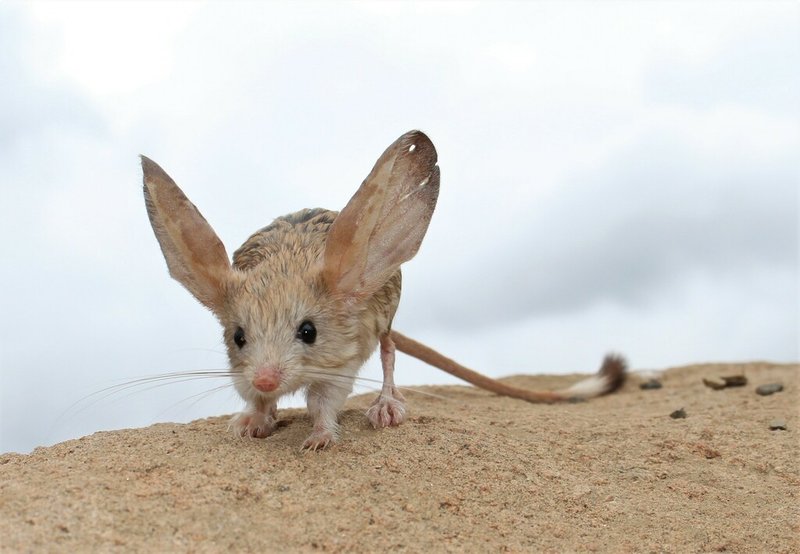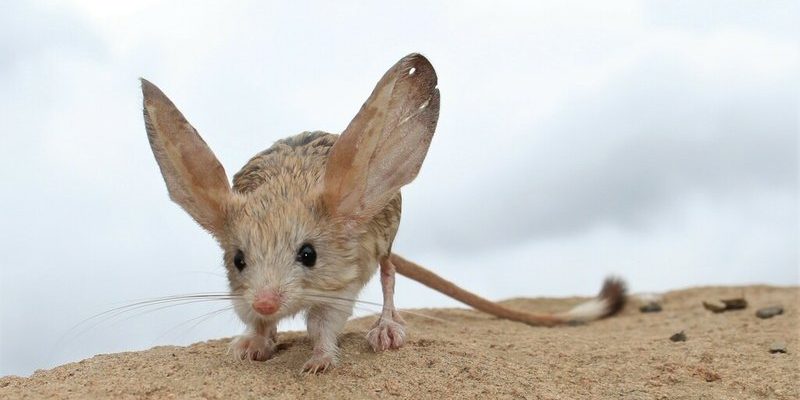
Imagine a creature that looks like a tiny kangaroo, but lives in some of the driest places on Earth. That’s the jerboa for you! These remarkable little mammals are part of the family Dipodidae and are known for their long legs and big eyes. Native to the arid regions of Asia and Northern Africa, jerboas have adapted brilliantly to survive in harsh desert environments. They are nocturnal, which means they are most active at night, hopping around in search of food while avoiding the heat of the day.
Jerboas may be small, but they pack a punch when it comes to unique adaptations. Their powerful legs allow them to leap several feet in the air, making them skilled at escaping predators. With their large ears and keen sense of hearing, they can detect threats long before they come close. So, the next time you picture a desert, think of jerboas as the energetic inhabitants, darting swiftly through the sand!
These little creatures not only look cute but have fascinating lifestyles that are worth exploring. From their physical characteristics to their diets and habitats, there’s so much to learn about them. So grab a cup of coffee and settle in, because we’re about to dive into the world of jerboas!
Physical Characteristics of Jerboas
Jerboas are quite distinguishable thanks to their unique anatomical features. Their most notable trait is their long hind legs, which are designed for powerful jumps. Some species can leap up to three meters in a single bound! This impressive ability helps them escape from predators quickly. Their front legs are much shorter and have small, grasping claws, perfect for digging.
Their bodies are covered in soft fur, which varies in color from sandy beige to brown, allowing them to blend seamlessly into their desert surroundings. This camouflage is crucial for their survival, helping them avoid detection by both prey and predators alike. Along with that, they have large, expressive eyes that help them see well in dim conditions, making their nighttime activities a breeze.
Additionally, jerboas have long tails that not only add to their balance while hopping but also help with communication among each other. The length of their tails can vary significantly between species, with some tails being nearly as long as their bodies! Overall, these physical traits are finely tuned to help jerboas thrive in their specific habitats.
Habitat and Geographic Distribution
Jerboas are primarily found in arid and semi-arid regions, making their homes in deserts and scrublands. They are predominantly located in the Sahara Desert, Central Asia, and regions of Mongolia. These lands may seem harsh, but jerboas have adapted brilliantly to these environments, utilizing burrows to escape extreme temperatures and store food.
During the day, when the sun is at its hottest, jerboas retreat into their burrows to avoid the heat. These burrows are often complex tunnels that can reach impressive depths, providing a refuge where they can stay cool. At night, they emerge to forage for food, which helps them avoid the harsh sun and conserve water. This ability to thrive in such a challenging environment is a testament to their resilience and adaptability.
The geographic range of jerboas varies by species, with some being more prevalent in certain areas than others. For example, the Long-eared Jerboa can be found in regions of Mongolia and China, while the Lesser Jerboa is more common in North Africa. Exploring these habitats gives us insight into how these creatures interact with their environments and ensures their survival.
Diet and Feeding Habits
Jerboas are primarily herbivorous, which means they enjoy a diet rich in plants. Their typical menu includes seeds, roots, and other vegetation found in their desert habitats. Since water is scarce in the desert, jerboas have developed a fascinating ability to extract moisture from the food they eat, minimizing their need for direct water sources. Isn’t that clever?
Additionally, they have sharp incisors that allow them to dig and access underground tubers, which are a great food source. Their feeding habits are carefully timed with their nocturnal lifestyle, as they search for food after sunset when the temperatures begin to cool down. This nocturnal behavior not only helps them find food but also helps them stay safe from daytime predators.
Interestingly, jerboas also exhibit some opportunistic feeding behaviors; if food is scarce, they might nibble on insects or other small invertebrates. This flexibility ensures they can adapt to their environment, making the most of whatever food source is available. Overall, their diet is a clever mix of plant-based foods and occasional protein to support their energetic lifestyle.
Behavior and Adaptations
When it comes to behavior, jerboas are nothing short of fascinating. They are known for their incredible agility and jumping skills, which are essential for evading predators. Their unique hopping motion not only helps them travel great distances but also reduces the amount of energy they expend while moving—an important trait for survival in the desert.
Jerboas are also social creatures, often living in small family groups. Communication among them involves a range of vocalizations, body language, and even tail movements. These interactions play a crucial role in recognizing each other and establishing relationships within the group, which can be essential for breeding and raising young.
Moreover, their ability to thrive in harsh conditions has led to several physiological adaptations. For instance, they have developed efficient kidneys that conserve water, allowing them to survive on minimal hydration. They are also capable of lowering their metabolic rates during extremely hot temperatures, helping them endure the heat without dissipating too much energy.
Reproduction and Lifespan
Reproduction in jerboas typically occurs during the warmer months of the year, when food resources are abundant. After a gestation period of about 25 to 30 days, females give birth to a small litter of two to five young. These babies are born blind and helpless, relying heavily on their mothers for warmth and nutrition during the early stages of their lives.
Once the young are weaned, they start to gain independence and become more active. By the time they are about 2 to 4 months old, they can venture out on their own, although they often remain close to their family unit for safety. It’s a heartwarming sight to see them leap around, learning how to navigate their environment.
The average lifespan of a jerboa in the wild is about 2 to 3 years, largely due to the high predation rates and the extreme conditions of their habitat. However, in captivity, they can live longer, often reaching up to 5 years. This difference emphasizes the impact of environmental factors on their survival and reproduction.
Conservation Status
Currently, many species of jerboas are facing threats due to habitat loss and climate change. As deserts continue to expand and human activities encroach into natural habitats, jerboas are finding it increasingly difficult to thrive. The destruction of their burrowing areas and food sources poses significant risks, leading to declining populations.
Some jerboa species are classified as threatened or near threatened by conservation organizations, leading to efforts aimed at their protection. Conservation initiatives focus on preserving their natural environments, improving habitat management, and raising awareness about the importance of these unique creatures in their ecosystems.
By protecting jerboas and their habitats, we can help maintain the balance of their ecosystems, ensuring these incredible creatures continue to thrive for generations to come. After all, every species plays a vital role in the tapestry of life on Earth!
Interesting Facts About Jerboas
| Size: | 4 to 6 inches long, excluding the tail |
| Weight: | 3 to 5 ounces |
| Habitat: | Deserts, scrublands, and sandy areas |
| Diet: | Herbivorous (seeds, roots, and some insects) |
| Speed: | Up to 15 miles per hour when jumping |
| Lifespan: | 2 to 3 years in the wild; up to 5 years in captivity |
FAQ
Are jerboas dangerous to humans?
Jerboas are not dangerous to humans at all. They are shy and prefer to avoid interaction with larger creatures. If approached, they are more likely to flee than to confront a person. Their primary defense mechanisms involve their ability to jump away quickly and hide in their burrows.
Can jerboas be kept as pets?
While keeping a jerboa as a pet might seem interesting, it’s important to note that they require very specific care that can be challenging to provide in a home environment. They have unique dietary and habitat needs that can be hard to replicate outside their natural ecosystems, which could lead to health issues. It’s often better to appreciate them in their natural settings or through responsible conservation efforts.
What do jerboas eat in their natural habitat?
Jerboas primarily consume seeds, roots, and some forms of vegetation found in their arid environments. They also occasionally eat insects to supplement their diet, especially during times when plant food is less available. This varied diet helps them adapt to the challenging conditions they face in the wild.
How do jerboas survive without much water?
Jerboas have evolved to survive with limited water availability by efficiently extracting moisture from their food. Their kidneys also conserve water by producing highly concentrated urine, allowing them to thrive even in extremely dry environments. This remarkable adaptation is key to their survival in the desert.
Are jerboas social animals?
Yes, jerboas are social creatures. They often live in family groups and communicate with each other using vocalizations and body language. Social interactions are important for group cohesion and play a role in breeding and raising their young.
What adaptations help jerboas avoid predators?
Jerboas have several adaptations that help them avoid predators, the most notable being their excellent jumping ability. Their long hind legs allow them to leap away quickly when threatened. Their muted fur coloration also provides effective camouflage against the desert landscape, helping them blend in and escape notice.
How do male and female jerboas differ?
While male and female jerboas look quite similar, males tend to be slightly larger than females. Observing their behavior during mating seasons can also reveal distinctions, as males are often more territorial and will engage in displays to attract females.
What role do jerboas play in their ecosystem?
Jerboas play integral roles in their ecosystems as seed dispersers. By consuming seeds and excreting them in different locations, they help promote plant growth and diversity in their habitats. This not only supports their survival but also contributes to the overall health of the desert environments they inhabit.
How can I help conserve jerboas?
You can help by supporting conservation organizations dedicated to protecting desert habitats and advocating for sustainable land-use practices. Educating others about the importance of jerboas and their ecosystems can also contribute to their preservation efforts. Awareness is a powerful tool for conservation!
Where can I see jerboas in the wild?
Seeing jerboas in the wild can be a unique experience, but it’s important to remember that they are nocturnal and shy. Visiting arid regions during the evening hours might give you a chance to spot them. However, it’s essential to respect their habitats and observe them without disturbing their natural behavior.
Are there different species of jerboas?
Yes, there are several species of jerboas, each adapted to specific habitats and conditions. Some common species include the Long-eared Jerboa and the Lesser Jerboa. Each species has unique characteristics that help them survive in their respective environments.

